Social media itself, never mind terms like social media presence or reputation, is quite a new phenomenon. This tool allows businesses to combine customer service with social media, enabling them to actively respond to customer queries faster than ever before.
However, to work effectively, businesses must be credible. Read on to learn more about why authenticity is important for your business and how you can take simple steps now to improve it.
Continually Shifting Sands
Think about how attitudes towards social media have evolved even in the last few years. Before the pandemic, people began to lose faith in social media thanks to scandals like Cambridge Analytica and the rise of “Fake News.” This resulted in the reputation of these platforms as arbiters of truth becoming seriously contaminated. Even in 2017, this had an especially negative impact on Millenials, as you can see in the infographic below.
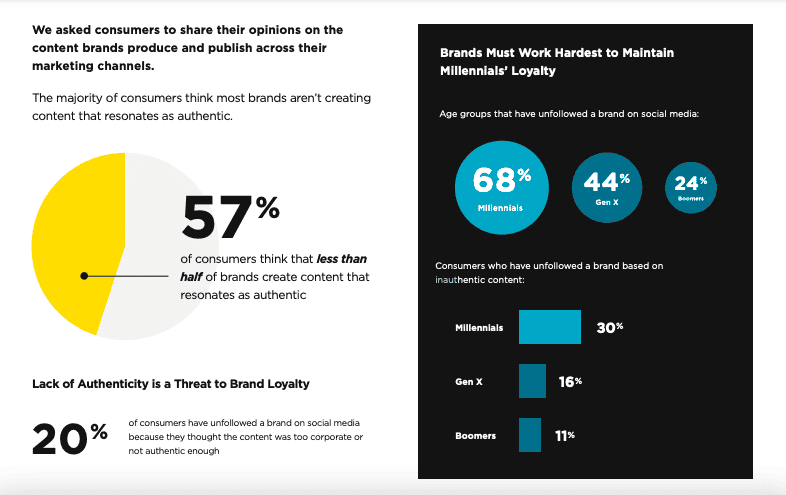
Image sourced from Nosto
Then, the pandemic brought people back to social media to connect with people during a time of isolation. Furthermore, it proved useful to governments when informing the public of changes to Covid regulations. Since then, AI-generated content has begun to flood social media, with calls to ensure that this is labeled as such by platforms like Google and Facebook.
With consumer faith in brands so low, social media has had a large part to play in this. In a world where users are constantly faced with fake content, scams, and sponsored content, it’s no wonder people are beginning to feel it lacks integrity.
As a result, businesses are learning to adapt their social media presence to make it as authentic and trustworthy as possible and working hard on their social media marketing strategy. This aims to humanize their brand while connecting to a wider audience.
Social media has changed the playing field for brands, big and small. With the power of social media, a Singaporean company with an sg domain can create genuine connections with customers around the globe. The most important element that drives all this is authenticity.
What Does Authenticity Mean?
On social media, it’s all about staying true to your values. This must be done in such a way that you show your target audience that you care about them and what matters to them.
This creates an environment in which you appear real, solidifying trust and helping you build and maintain relationships, individual or at large.
As a concept, this sounds simple enough, but carrying it out successfully can be more difficult: Content ideas not only have to be innovative, topical, and eye-catching, they have to strike a fine balance between promotional—after all, that’s what makes a company run—and non-promotional content.
Furthermore, it’s also important to consider how this can vary between age groups—Boomers and Generation X generally believe more strongly in personal relationships with brands, whilst Millennials’ attitudes are related more towards personal attention, empathy, and social awareness. The graph below shows the importance of empathy in customer service by age group.
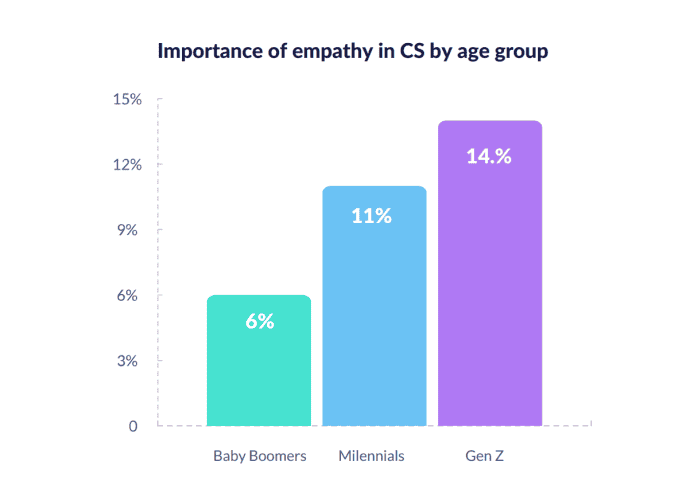
Image sourced from Hiver
However, while marketers have always focused on creating the perfect piece of content to achieve this, it is now not the only weapon they have in their arsenal that they can use to nurture their authenticity.
For instance, they can call on authentic videos and other visuals to engage with users—like Instagram stories, TikTok and YouTube Shorts—to address issues they feel are important. Doing this without seeming insensitive or jumping on the bandwagon is important if you don’t want it to backfire.
Your marketing team can even try converting podcasts to blogs with clever software, ensuring your content can reach the widest audience in a variety of ways.
Why Are Marketers After Brand Authenticity?
Simply put, when a brand builds trust with customers, 62% will stay loyal.
Trust will trigger positive emotions, which will, in turn, encourage customers to feel good about choosing to buy from your company. A vital way to achieve this is to make your brand authentic.
The positive impacts of this will vary from increasing sales to amplifying your social media reach.
1. Consumers As Belief-Driven Buyers
Being authentic will help you stick out of the crowd in today’s flooded market. It fosters a unique brand image that people remember.
By living up to your brand values, you will create a stronger community of consumers who feel aligned with you. Employing a social media reporting process will allow you to make the most out of this.
2. Engagement Increases
As trust is built up by maintaining consistency and living up to pledges, customers feel more inclined to engage positively with various campaigns you might release and eventually become loyal.
Loyal customers are more likely to engage with posts, whilst 86% would recommend you to others. Evidence suggests consumers are far more likely to do that when they believe that a brand is genuine.
3. Strong Ties With Your Audience
Trust is one of those glues that hold groups or individuals together—just as this is hugely important in your personal life, it is equally so for employees, business partners, investors, and customers.
The bottom line is that authenticity creates a strong sense of community by continually bettering the way you communicate with your specific audience. Over time this contributes to the perfect base mix for any customer base: a sprinkling of loyalty, a large dollop of engagement, and that all-important support.
4. Improve ROI
This is because authentic brands foster trust, which in turn fosters a better reputation. With a strong community of loyal customers, you are more likely to be recommended to others. At the same time, those that do are more likely to make repeat purchases. It’s good to spend some of your budget here to reap the rewards. Most companies agree that retention is cheaper than acquisition, while most consumers are willing to reward a brand that they feel is authentic.
6 Ways To Reach The End Goal: A Trustworthy Reputation
This whole section is all about how to fit this into your social media marketing strategy—the part that engages with your audience. This can work extremely well when matched to your content marketing strategy—the part designed to educate your audience.
If you aren’t already, put some time into making these two strategies sew up together into a seamless tapestry. Want any advice on making the perfect social media marketing strategy? Then click here.
Being truly authentic can be challenging as you need to consider a rounded approach. Yet, the following tips will help you achieve this.
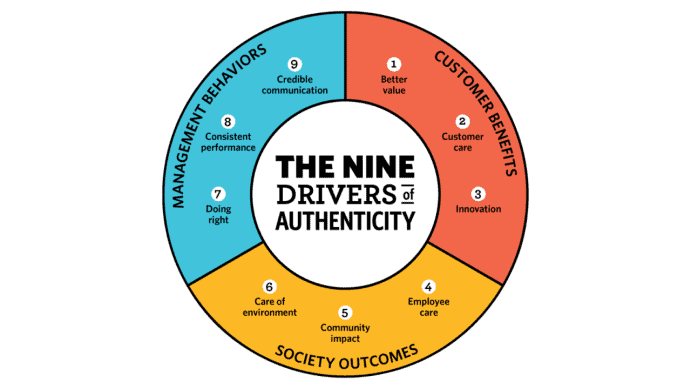
Image sourced from Fleishman Hillard
1. Define Your Aims And Values
This is all about knowing yourself and your business because understanding what you want is one of the best places to begin to achieve success.
Ask yourself why your brand exists and what problem it is trying to solve—this will help you maintain consistency and build a strategy that makes sense. If you are a food company, stress your adherence to and understanding of health issues such as obesity.
2. Live Up To Your Expectations
As the saying goes: don’t just talk the talk but walk the walk. If you acknowledge things like obesity, don’t just ignore this in your product range. It makes your words feel empty, and thus your brand to not seem authentic.
Once you have decided what your company goals and values are, live and breathe them across your business, from social media posts to the office environment all the way to the way in which your company produces its products.
3. Realize It’s Not All About Profit
This is a common mistake that initially seems counter-intuitive. However, demonstrating that you genuinely care for your customers by actively seeking to engage with them and offer solutions will increase future sales. It will also help you retain customers: the top businesses in any industry have a retention rate of 94%.
Connect with your audience
Connect with your loyal customers in positive ways to improve brand loyalty and foster a reputation that you do actually walk the walk with your values and promises.
To make things easier, consider more efficient and cost-effective IP phone numbers that enable you to reach your customers faster and provide them with the solutions they need.
Be financially transparent
Financial transparency and compliance will help your audience see that you are operating above board and care about more than just your bottom line.
Make sure you publish regular audits and show where your profits go. If you are having difficulties carrying this out, consider using a SOX compliance audit checklist.
Social media posts
They don’t all need to be about sales. Making people laugh is always a good place to start!
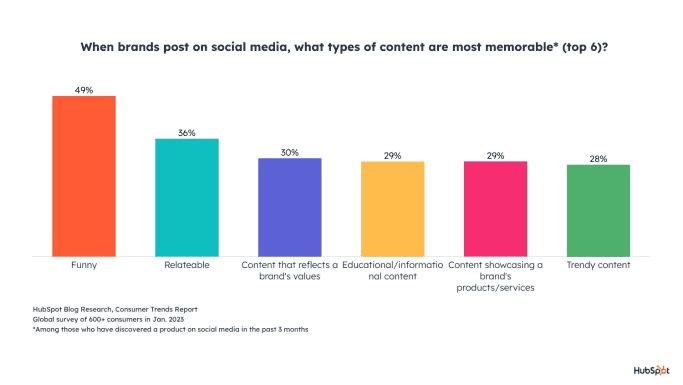
Image sourced from Hubspot
Many successful companies find ways to actually be useful to their customers by ascertaining what value it brings them through their social media. Consequently, consumers are given the motive to engage without having hard sales shoved down their throats.
If you are struggling with setting social media goals, there is plenty of advice out there. Having clear objectives makes balancing all this far easier.
4. Engage With Your Audience
This is a cornerstone to nurture trust and authenticity. It can include direct messages, comments, and reviews from your business itself to ensure customers feel understood and valued, which some 74% feel is integral to remaining loyal. Alternatively, customers can actively participate through polls, rewards, or user-generated content.
Show that you are human!
Provide content showing how business life works behind the scenes—people appreciate a company that creates a healthy and prosperous environment for its employees. Treating employees badly is second only to lying about product quality when it comes to reasons consumers change brands.
Use ambassadors, reputable celebrities or influences, as well as anyone with a key role in the process to get engagement on social media that might ring loud and clear with your audience.
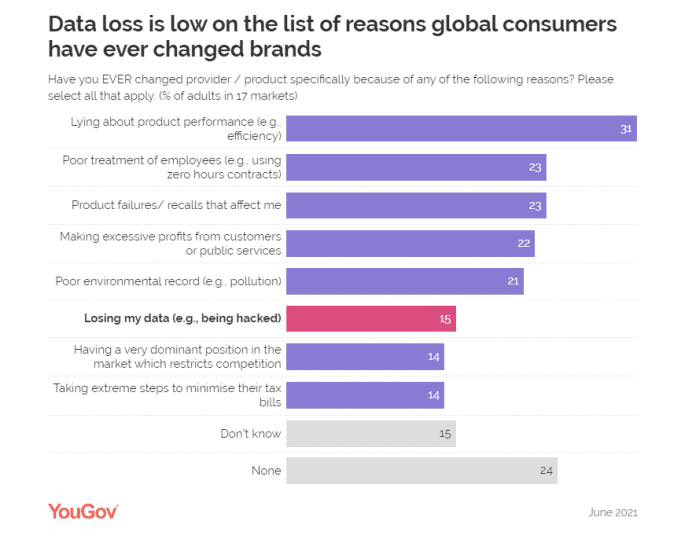
Image sourced from YouGov
You have human customers, too, right?
Use their testimonials: this is often far more effective than content your employees create, as well as being ready-made and largely free!
Taking advantage of user-generated content (UGC) makes economic sense. Sharing their content also makes your loyal customers feel like you appreciate them as a community.
It also tends to be more credible to viewers than coming from the brand itself. Talk about hearing it straight from the horse’s mouth.
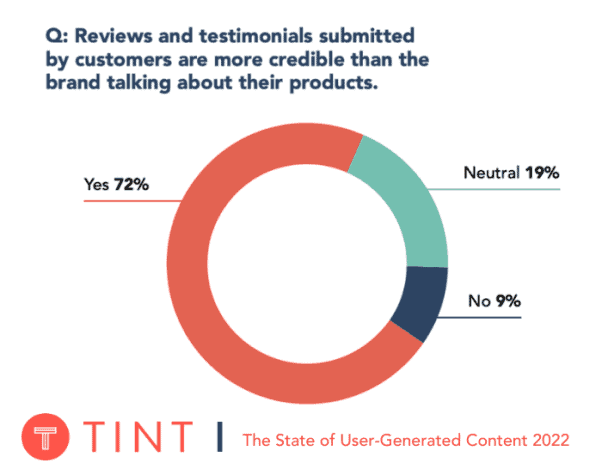
Image sourced from tintup.com
Actively communicate with your audience
You can achieve this in a variety of ways, like providing the space to give their opinion through simple techniques like polls or posing a question whenever publishing content.
Another way to connect with your audience is by actually looking for and implementing feedback—giving you that whole walk-the-walk persona.
Think about investing in a VoIP telephone which permits your buyers to reach you anytime, anywhere, alongside automated responses that ensure you respond to simple queries fast.
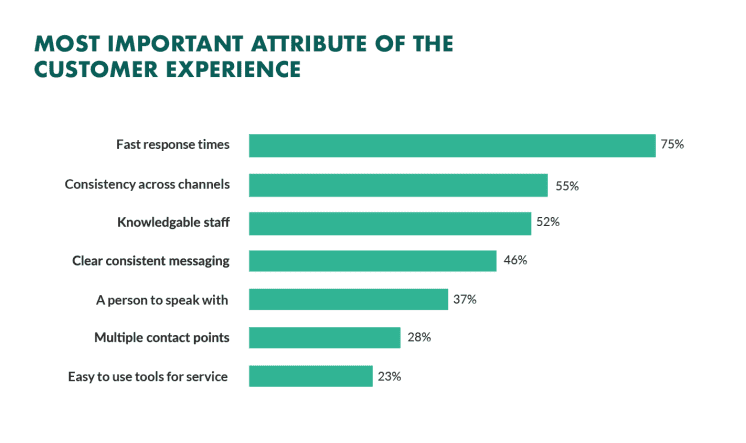
Image sourced from Super Office
When responding, be calm, acknowledge the comment, and only apologize if necessary.
5. Resolve Customer Issues Transparently
This means not just pretending as if mistakes or errors in judgment never occurred. It means recognizing them and offering solutions—this just makes you likable, as it does in your own personal lives.
Demonstrate you are open to criticism, but in such a way as you were able to use this to improve the situation. Make sure customers can reach you easily through social media, chatbots, or a call center in the cloud. It will go a long way to reducing their initial frustration.
If you are going to address the issue, make sure to offer a solution. While doing this, bear in mind that any criticism, if taken constructively, can be valuable and help you grow in the future and will only improve consumer trust.
The proof is in the pudding: 96% of consumers agree.
6. Balance What You Share
While you want to appear human and vulnerable to produce a larger amount of engagement in a post, this needs to be balanced and appropriate. Avoid any content that might be too far and make people feel uncomfortable.
Finally, your authenticity strategy must also not include any situation where private information is leaked to a public audience, however innocently, as this will ultimately make you seem the complete opposite.
Create Genuine Customer Relationships
As you can see, in today’s market, consumers want brands and businesses that they can trust. In an online world where the provenance of a source is constantly being questioned, being able to buy from a company that actually walks the walk is hugely significant.
Being authentic means satisfying your belief-driven consumers, increasing engagement, and building stronger customer relationships. Ultimately, this leads to better sales and improves customer retention.
To prove yourself as an honest company, you need to set clear goals which you actually live up to. To promote a more resilient community around your brand, remember that it shouldn’t all be about profit for today’s conscientious consumer. Finally, engaging directly with your audience transparently and efficiently is integral to nurturing an authentic and reliable reputation.

